
15 Sep BOROBUDUR, THE GREATEST BUDDHIST MONUMENT Renzo Freschi
Borobudur, on the island of Java in Indonesia, dates from the 8th century and was designed by high priests and by a great architect as a monument in which an ascending path ideally allowed reaching nirvana. It is a colossal structure measuring 123 meters wide and 35 meters high, consisting of a base and of seven platforms (four square and three round) on top of which sits a stupa.
Conceived as a sacred mountain connecting earth and sky, its plan is like a mandala with four gates (one on each side) which give access to the ascending path. Being inspired by the complex symbolism of Mahayana Buddhism, each single part is governed by a numerology based on the numbers 8, a symbol of infinity, 9 representing victory over evil, and multiples thereof. For instance the Buddha statues placed along the way reaching the summit are 504 (5+4 = 9), but they become 1008 (1+8 = 9) if one counts the descent going back to the starting point.
On the first day I could only walk around its base, since access to the eight upper platforms necessitated a complex booking. The overcast sky combined with the dark color of the volcanic rock of which it is made, and the jumbled succession of niches, statues and chapels made it appear to me as a confused, indecipherable shape, which left me with a sense of perplexity verging on disappointment.
But Borobudur is not merely a monument providing an architectural depiction of the Buddha’s body, it is above all a spiritual itinerary, a progression toward a supposed higher consciousness. So on the second day I could undertake my slow ascent along the galleries leading to the summit, a symbolic image of nirvana. The extraordinary beauty of its 2672 reliefs narrating the life of the Enlightened One, the description of his wandering search for detachment from all that causes suffering, dissolved my doubts, but also opened my heart and mind. These three-dimensional scenes depict life at court and among the people, but also costumes, plants, flowers, animals of that time. The fluid and elegant bodies, the joyful serenity of the faces engender a sense of suspended harmony that penetrates thought.
I walked on towards the circular platforms, devoid of all ornaments, for they symbolize detachment from all things worldly, and where the statues of 72 (7+2 = 9) Buddhas sit half concealed within openwork stupas to signify that the Enlightened One’s body is dissolving. The topmost level with the central stupa cannot be accessed, for nirvana can only be reached with one’s heart, not by walking.
Walking along the balustrades, observing some of the reliefs, trying to decipher their meaning (for which the help of a guide can be useful) can be a spiritual route for some, but it certainly is an inspiring aesthetic experience for everybody.


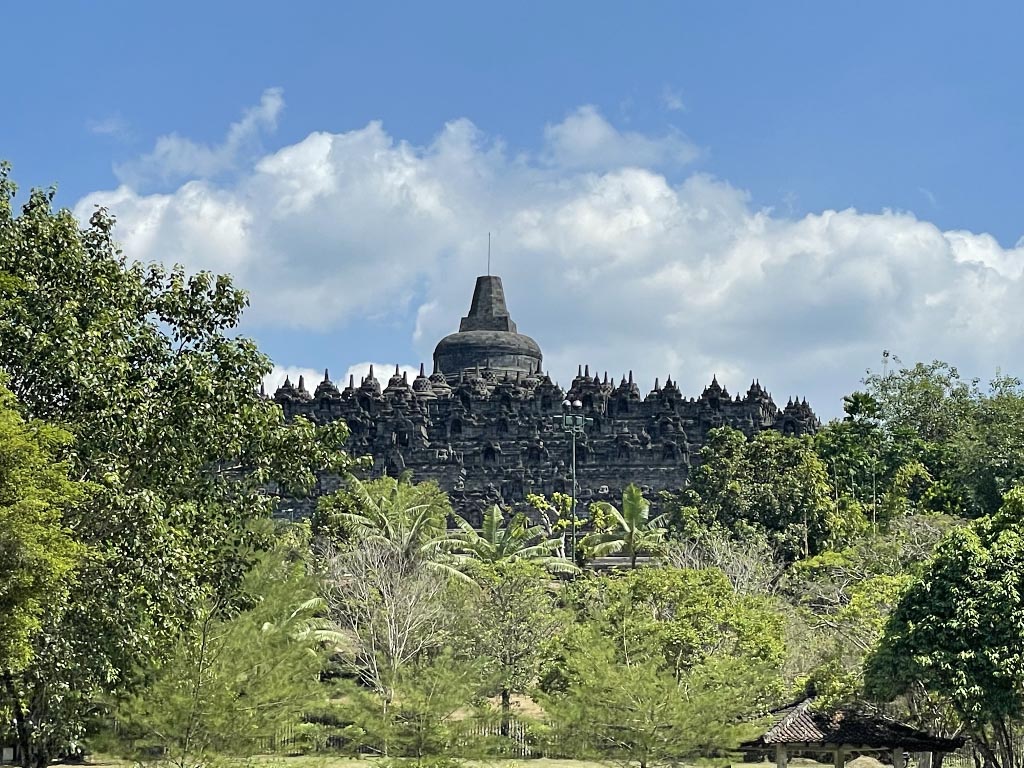
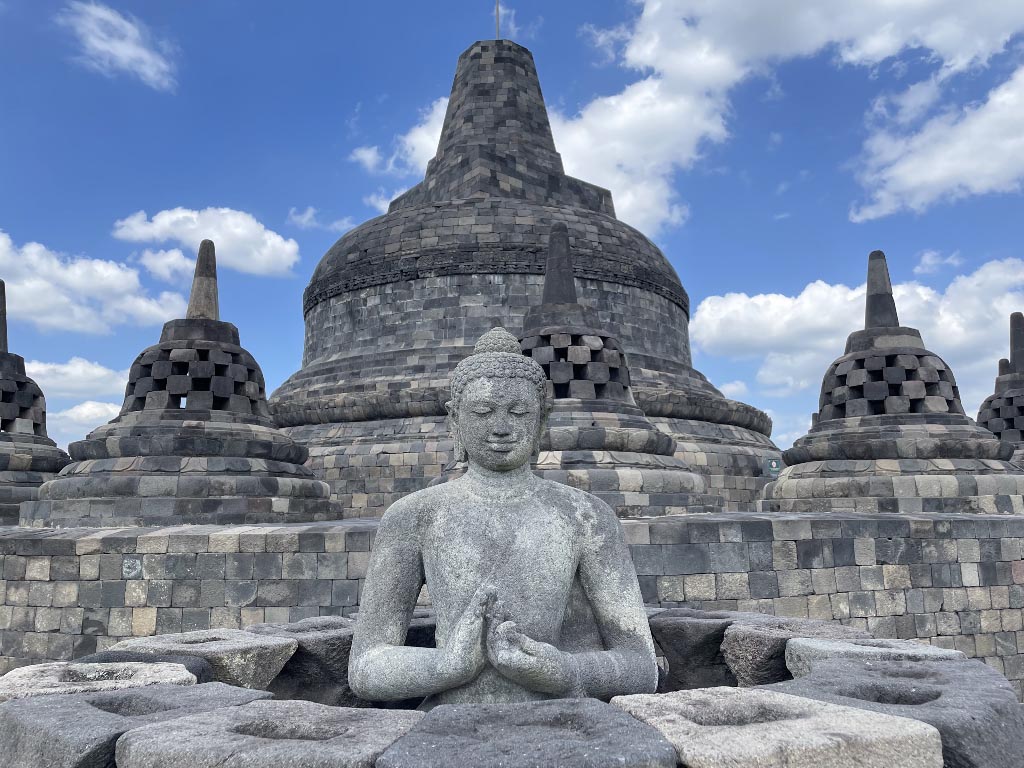


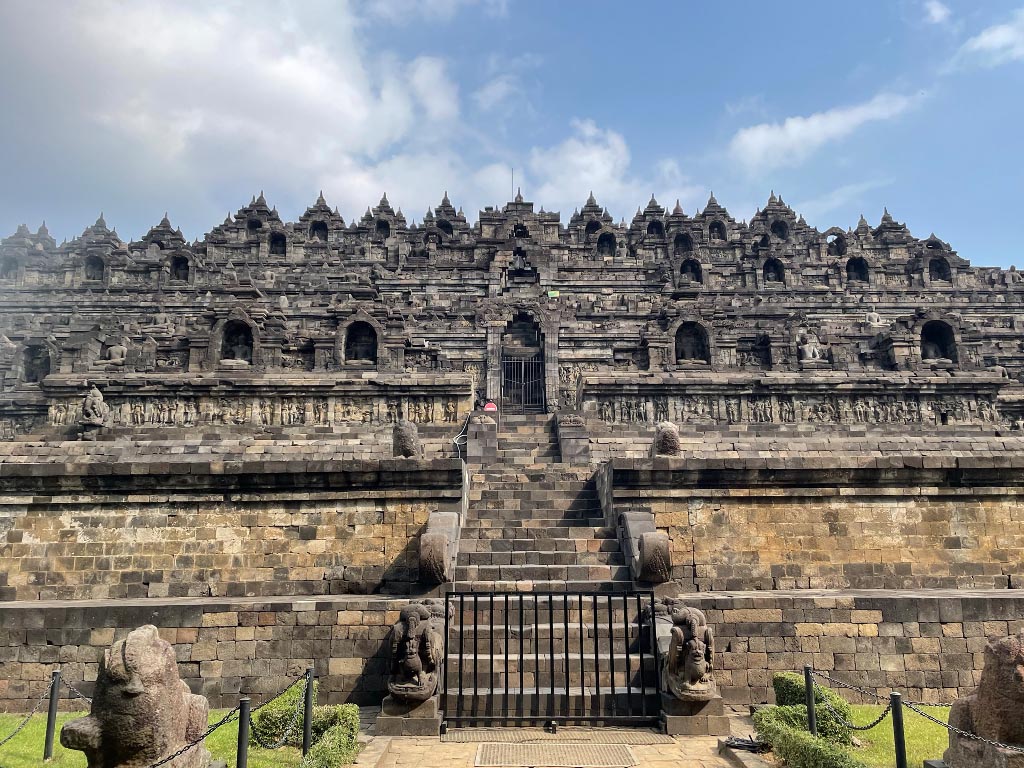
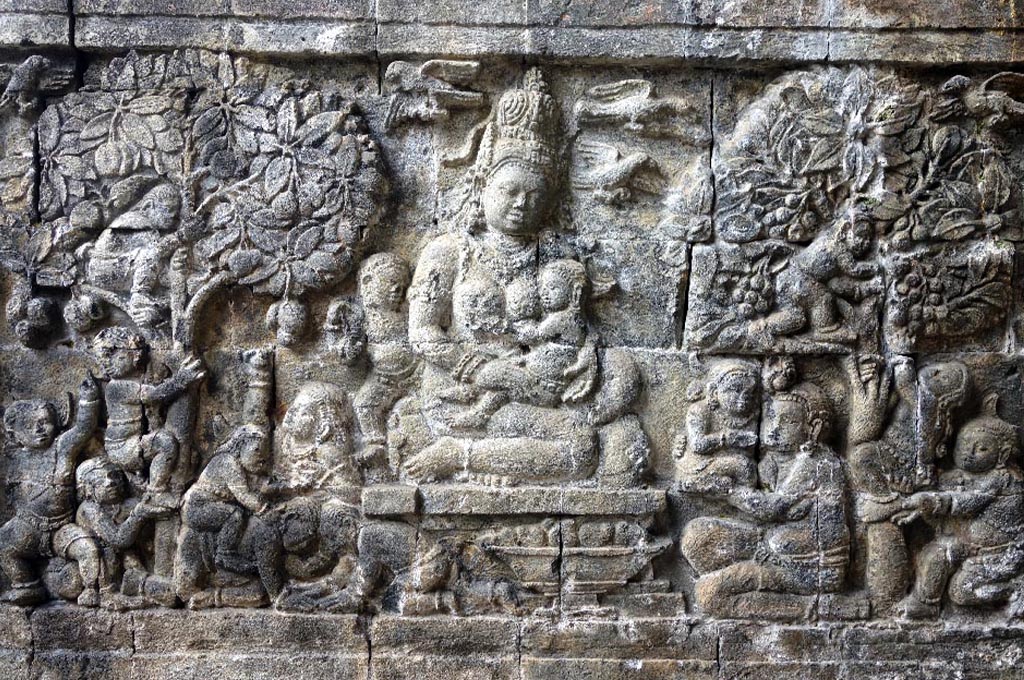
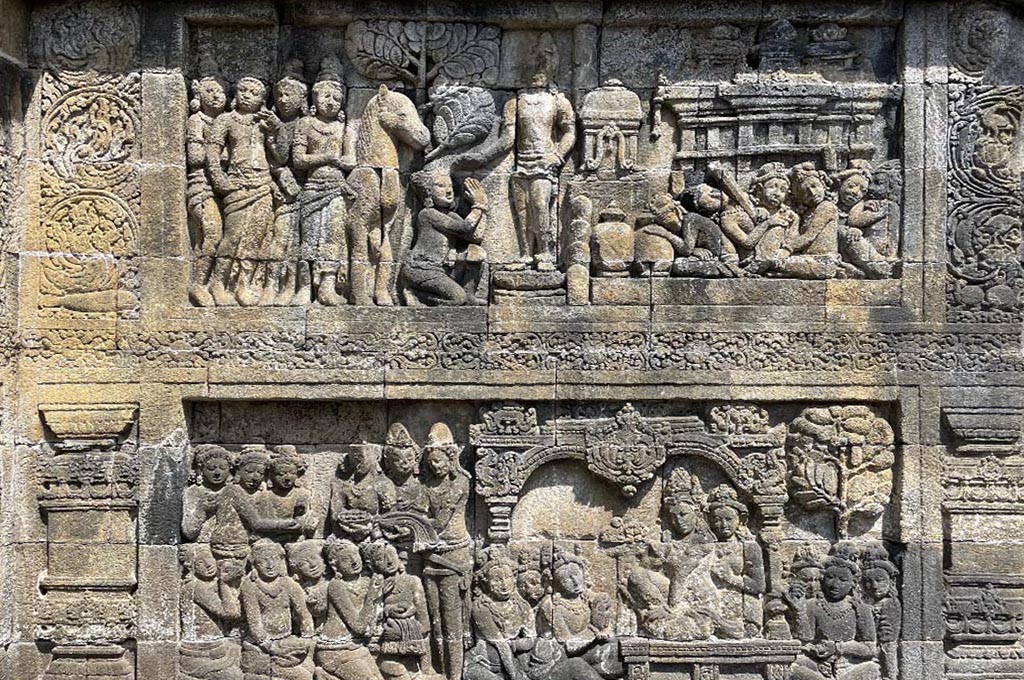
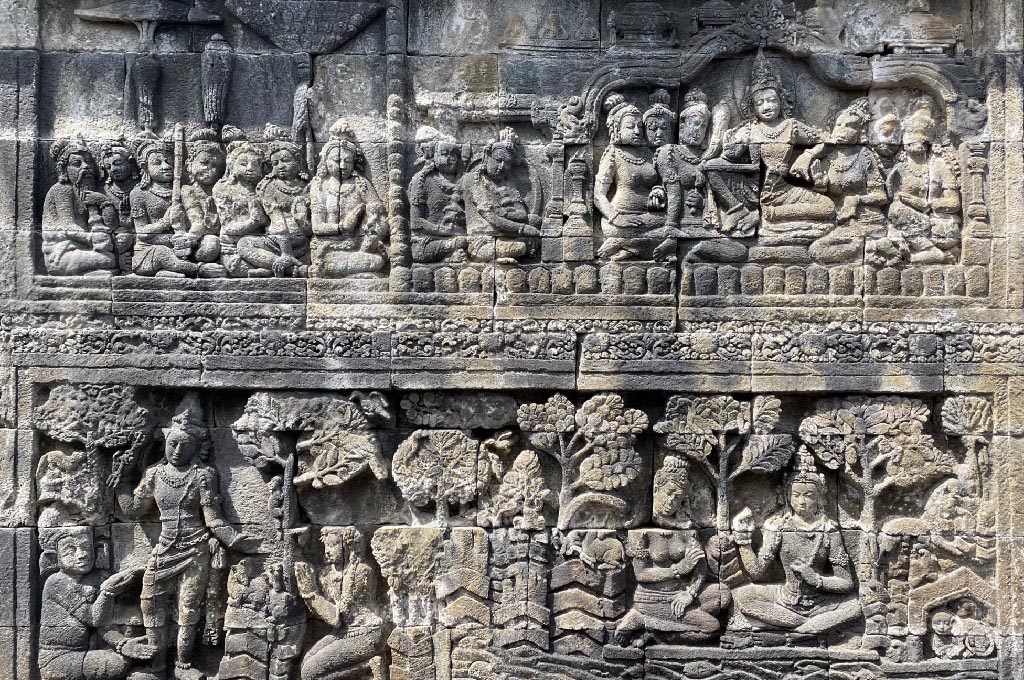
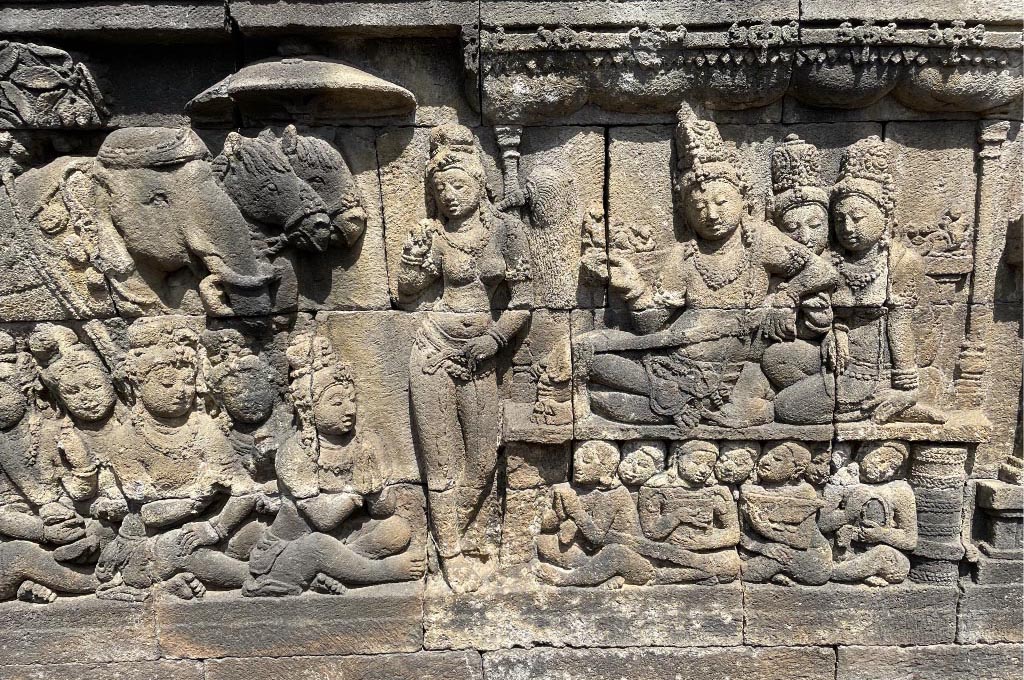
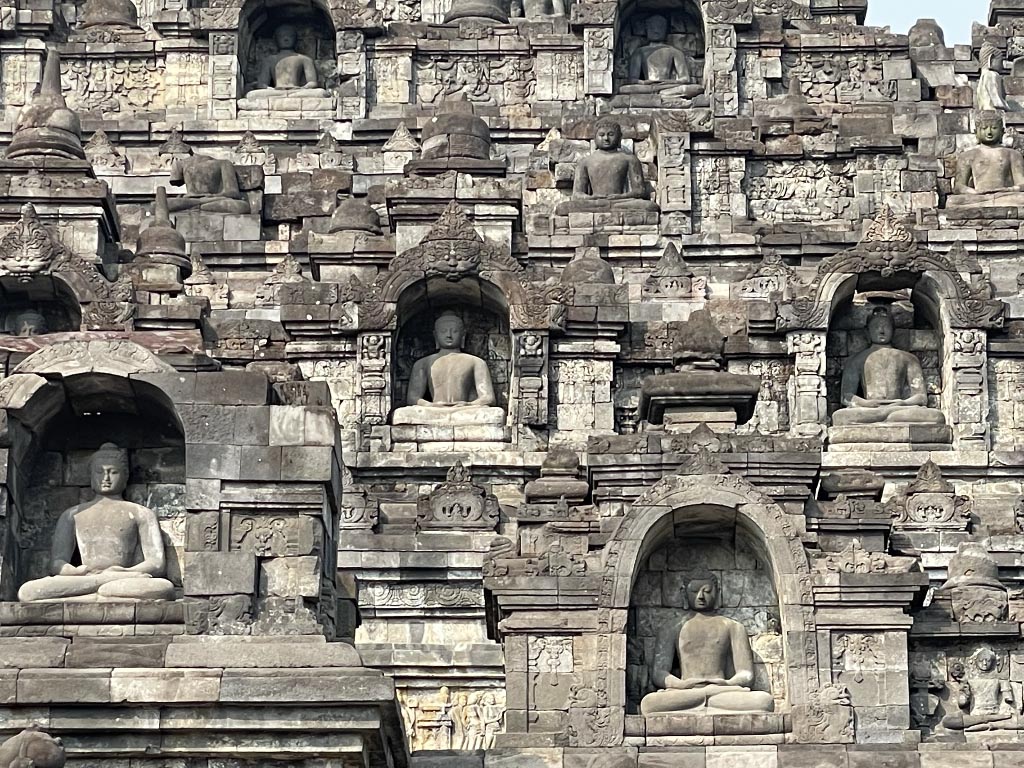
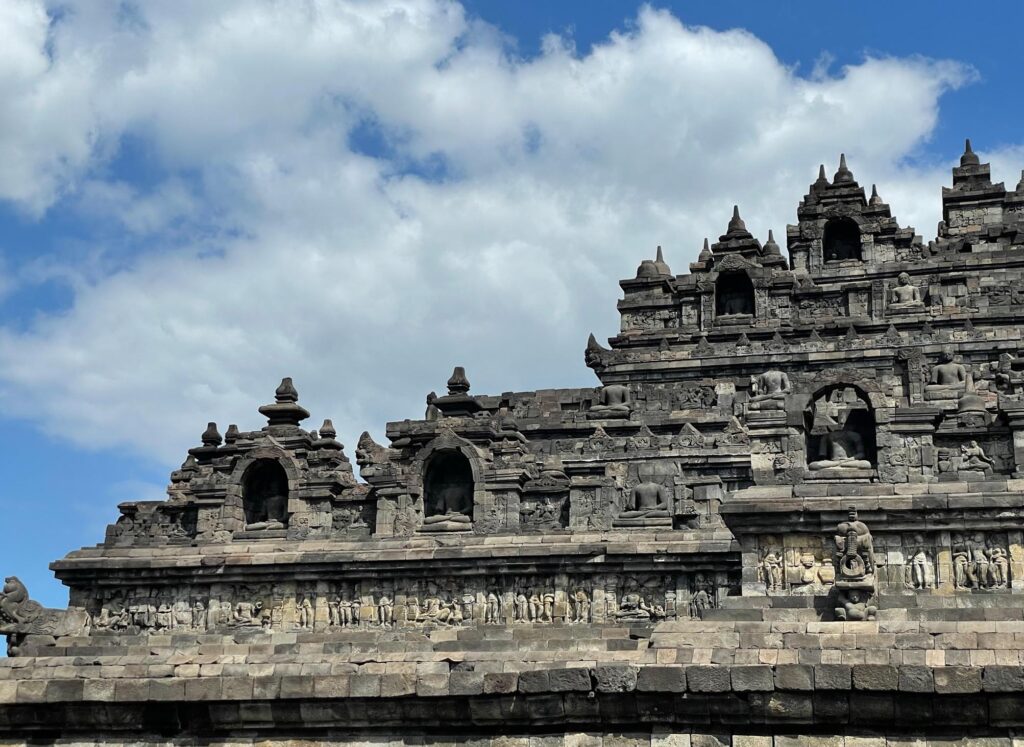
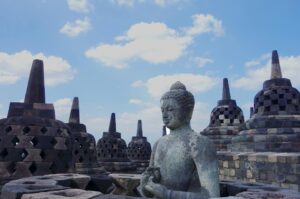
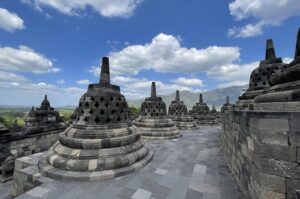
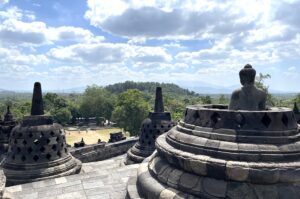
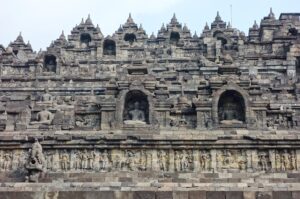
No Comments